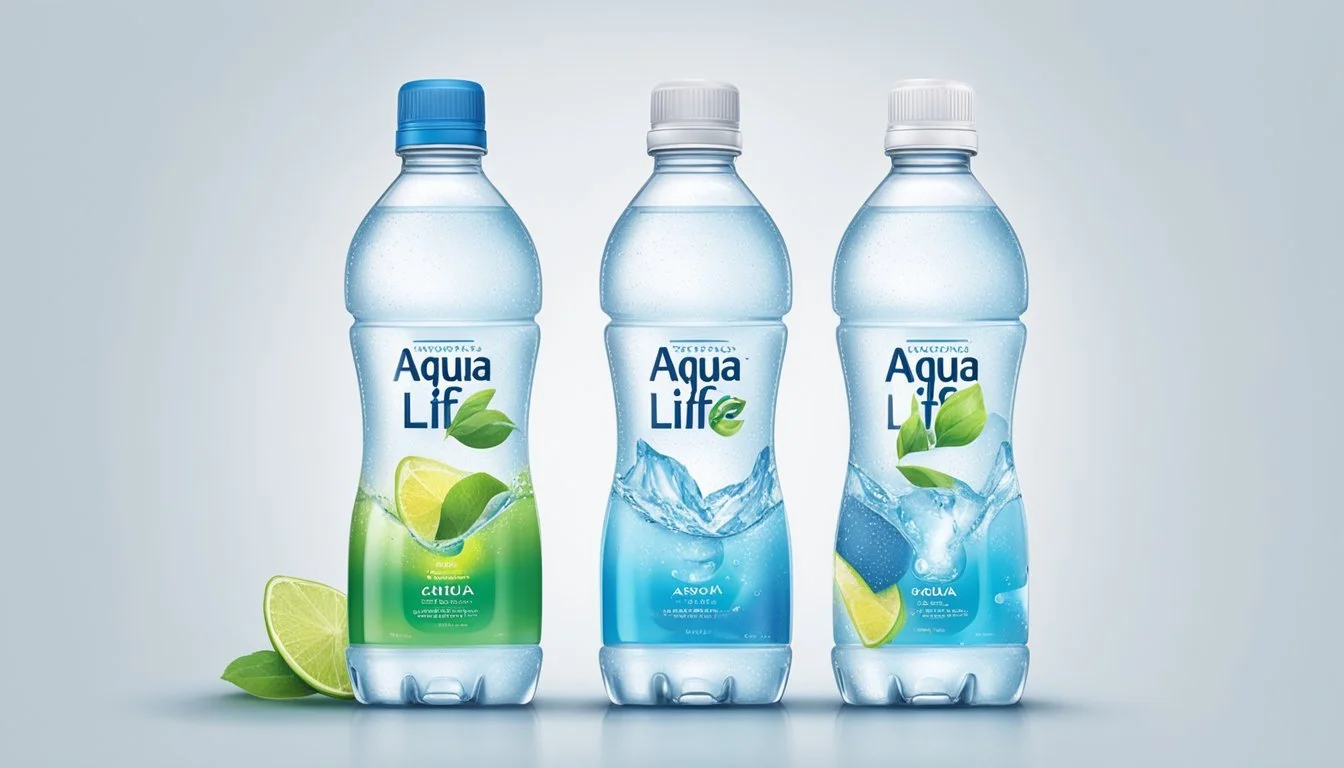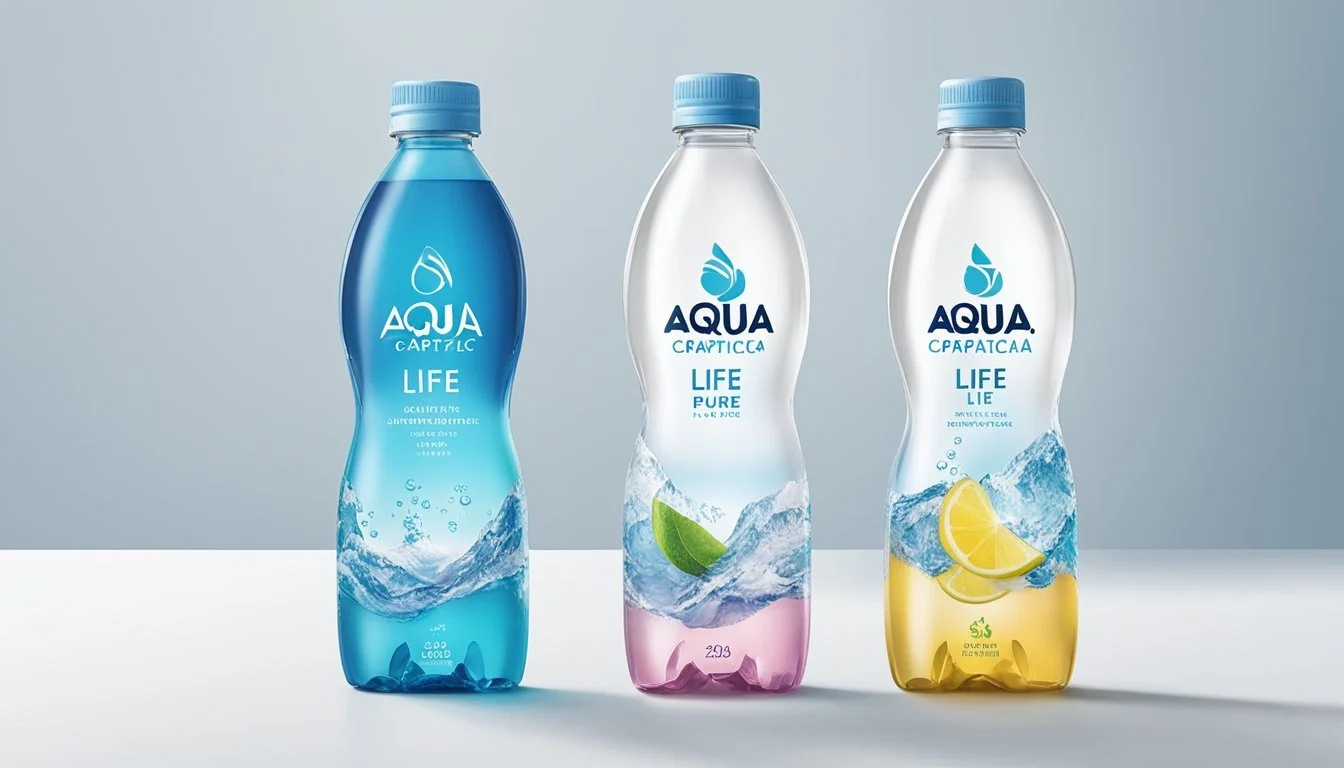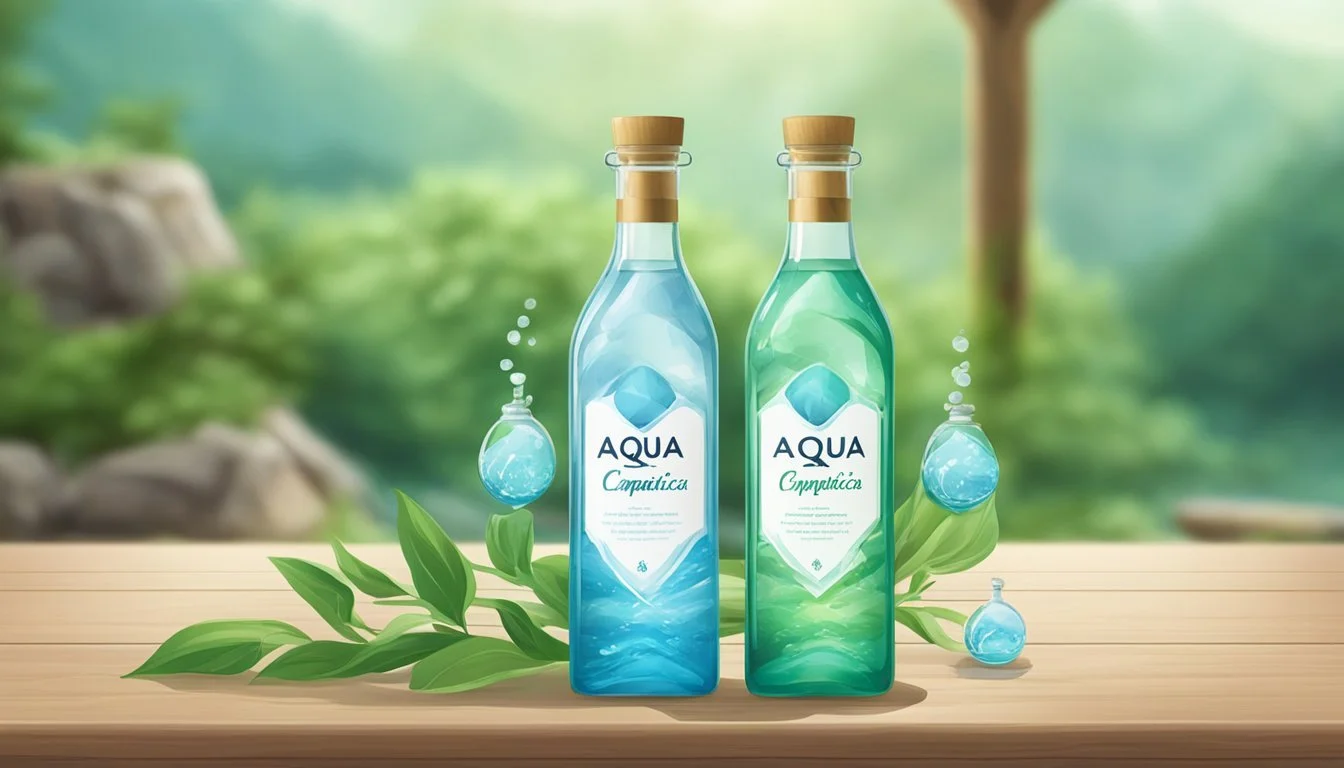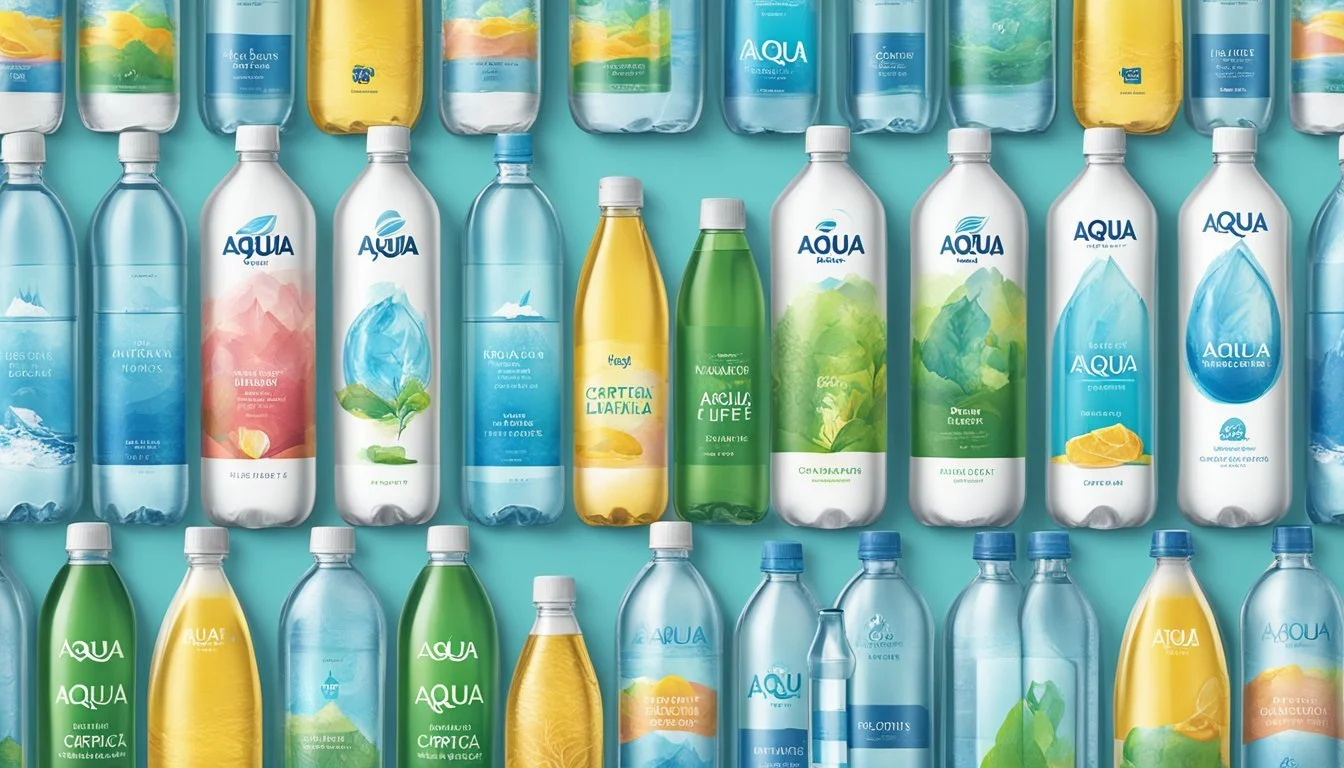Aqua Carpatica vs. Pure Life
Comparing Quality and Taste
Choosing the right bottled water can make all the difference for those who care not just about taste but also health benefits. Among the wide range of options, Aqua Carpatica and Pure Life are two brands that often stand out. Both have their own set of benefits, but Aqua Carpatica is generally considered superior for its natural mineral content and low sodium levels.
Aqua Carpatica is sourced from pristine springs and offers natural electrolytes, making it a preferred choice for those seeking hydration with additional health benefits. Pure Life, on the other hand, is widespread and convenient, but its average taste and lack of unique nutritional benefits set it apart.
For those prioritizing quality over availability, Aqua Carpatica provides a refined drinking experience that offers more than just basic hydration. While Pure Life is more accessible and affordable, it tends to fall short in areas such as purity and taste.
Overview of Brands
Aqua Carpatica and Pure Life are two notable bottled water brands with distinct characteristics catering to different preferences.
Aqua Carpatica is valued for its purity and mineral content. It is sourced from the Carpathian Mountains, known for their pristine environment. The water is nitrate-free, which is a significant advantage for health-conscious consumers. Additionally, it offers both still and sparkling varieties.
Pure Life, on the other hand, is a product of Nestlé Waters, the largest bottled water corporation globally. Despite its vast distribution network, Pure Life has faced criticism regarding its source. However, it remains a popular choice for its affordability and availability.
Key Features
Aqua Carpatica:
Source: Carpathian Mountains
Varieties: Still and Sparkling
Unique Selling Point: Nitrate-free
Pure Life:
Parent Company: Nestlé Waters
Distribution: Global
USP: Affordable and widely available
Pricing
Aqua Carpatica:
500ml Still: 65p
500ml Sparkling: 69p
Pure Life: Generally, lower prices based on regional availability and larger production scale.
The reputation of each brand can influence consumer preference. Aqua Carpatica's market strategy highlights its health benefits, while Pure Life relies on its extensive market reach. Both brands cater to different segments of the bottled water market, reflecting their unique strengths and selling points.
Source and Origin
Knowing the source of bottled water is crucial for consumers. It provides insights into the water's purity, mineral content, and overall quality.
Aqua Carpatica Source
Aqua Carpatica comes from the Carpathian Mountains, specifically from Carpathian Springs in Romania. This region is known for its pristine natural springs.
The water is naturally nitrate-free, which sets it apart from many other brands. It contains a low level of sodium and has a balanced mineral content.
Given its origin, Aqua Carpatica benefits from the natural filtration processes of the Carpathian aquifers, ensuring purity and quality.
Pure Life Source
Pure Life, a Nestlé brand, sources its water from multiple locations worldwide. This includes various municipal supplies and spring sources.
Unlike Aqua Carpatica, Pure Life is not consistently derived from a single natural spring. The water undergoes rigorous purification processes, including reverse osmosis and mineral rebalancing.
This makes it a versatile and widely available option but may not appeal to those seeking naturally sourced spring water.
Other Brands and Sources
Other popular bottled water brands also emphasize their sources:
Evian: Naturally filtered through glacial sands and aquifers from the French Alps.
Fiji: Sourced from an aquifer in the Yaqara Valley of Viti Levu in Fiji.
San Pellegrino: From natural springs near the Alps in Italy.
Icelandic Glacial: Collects water from Iceland’s Ölfus Spring, one of the largest natural springs.
Arrowhead, Poland Spring, Deer Park: Typically sourced from springs in the United States.
Essentia, Smartwater: Often use municipal sources but go through extensive purification processes, including ionization.
Each brand has its unique origin, impacting taste, mineral content, and consumer preference.
Water Quality and Composition
Aqua Carpatica and Pure Life offer distinct qualities in terms of purity, mineral content, and pH levels. Key differentiating factors include their source, filtration processes, and beneficial minerals present in each.
Evaluating Purity
Aqua Carpatica prides itself on being naturally nitrate-free, which is significant for those concerned about contaminants from agricultural runoff. It also boasts a low sodium level, enhancing its purity status. The absence of artificial additives and extensive filtration highlights Aqua Carpatica's commitment to maintaining natural water quality.
In contrast, Pure Life undergoes a rigorous purification process that includes reverse osmosis. This method is effective at removing impurities but may also strip the water of beneficial minerals. Still, it ensures a high level of purity, making it a reliable choice for clean hydration.
Mineral Content
Aqua Carpatica stands out with its balanced mineral profile, including essential electrolytes like calcium, magnesium, and potassium. These minerals contribute not only to hydration but also to the overall taste and health benefits of the water. The presence of silica adds to its smooth texture, enhancing the drinking experience.
Pure Life, while purified, lacks the robust mineral profile of Aqua Carpatica. Its mineral content is minimal due to the extensive filtration process. For consumers seeking significant electrolyte content for better hydration, Aqua Carpatica is advantageous.
pH Level Analysis
The pH level of bottled water affects its alkalinity and potential health benefits. Aqua Carpatica has a natural pH level of around 7.8, making it slightly alkaline. This can help neutralize acidity in the body, which some studies suggest may be beneficial for overall health.
Pure Life usually has a neutral pH around 7.0 due to its purification process. While it doesn't offer the same alkaline benefits, its neutral pH ensures that it remains a balanced option for daily consumption without altering the body's natural pH significantly.
Aqua Carpatica's combination of purity, mineral content, and slightly alkaline pH positions it as a standout choice for those prioritizing natural and comprehensive hydration. Pure Life, with its emphasis on rigorous purification, remains a solid option for ensuring clean and neutral-tasting water.
Health and Wellness Considerations
Hydration is the primary purpose of bottled water. Both Aqua Carpatica and Pure Life offer excellent hydration options. However, Aqua Carpatica claims to provide naturally occurring electrolytes, which help maintain the body's hydration levels more effectively.
Aqua Carpatica is marketed as being nitrate-free, a significant advantage for consumers concerned about water contaminants.
In contrast, Pure Life focuses on purity and undergoes rigorous purification processes. This makes it a reliable choice for those prioritizing significantly purified water.
Both brands are classified as spring waters, offering natural sources with distinct mineral compositions.
Minerals play a crucial role in the overall wellness provided by bottled water. Aqua Carpatica includes naturally occurring minerals like magnesium and calcium, promoting better health and wellness.
Low sodium levels are another critical factor. Aqua Carpatica boasts minimal sodium content, appealing to those managing their sodium intake.
For individuals looking to enhance their wellness through their water choice, both brands offer substantial benefits.
Comparison Table: Key Health and Wellness Factors
Feature Aqua Carpatica Pure Life Hydration Excellent Excellent Electrolytes Naturally occurring N/A Nitrate-Free Yes N/A Spring Water Yes Yes Minerals Magnesium, Calcium Purified (varied) Low Sodium Level Yes Moderate
Both Aqua Carpatica and Pure Life present themselves as strong options, focusing on distinct health and wellness aspects.
Environmental Impact
Both Aqua Carpatica and Pure Life have significant environmental impacts. Key points to consider are their bottle and packaging choices and their manufacturing practices.
Bottles and Packaging
Aqua Carpatica utilizes 100% recyclable PET plastic for their bottles. They claim to use sustainable sourcing to minimize environmental damage. The bottles also incorporate up to 50% recycled materials to reduce their carbon footprint.
Pure Life, owned by Nestlé, also uses recyclable PET plastics for their bottles. They aim to make their packaging more eco-friendly by increasing the use of recycled content in their bottles. To promote recycling, Pure Life runs educational campaigns on proper recycling practices.
A significant concern for both brands is the environmental impact of plastic waste. Improper disposal leads to pollution and affects wildlife.
Manufacturing Practices
Aqua Carpatica employs energy-efficient technologies in its manufacturing processes. They use renewable energy sources where possible to lower their carbon emissions. The company's facilities are designed to minimize water usage and waste production.
Pure Life has implemented several sustainability efforts in its manufacturing practices. They have invested in water stewardship programs to ensure sustainable water sourcing. The company also aims to improve energy efficiency and decrease greenhouse gas emissions in their facilities.
Both brands are addressing environmental concerns, but more transparency on their practices and wider adoption of sustainable measures is needed to truly assess their environmental footprint.
Taste Profile and Consumer Preference
Taste and consumer preference play central roles when choosing between Aqua Carpatica and Pure Life. Each brand offers unique qualities that cater to different palates and dietary needs.
Taste Test Findings
In taste tests, Aqua Carpatica is often praised for its pure and clean taste. This natural mineral water, sourced from the Carpathian Mountains, stands out due to its low sodium and nitrate-free composition. Consumers frequently describe the water as smooth with a silky mouthfeel and a subtle yet refreshing profile, making it a popular choice for those who prioritize purity.
On the other hand, Nestlé Pure Life has a more balanced and neutral taste. Widely considered for its consistency, Pure Life is engineered to have a universal appeal. It uses purified water enhanced with minerals, which creates a crisp and clear flavor. The lack of strong mineral flavors makes it an everyday option suitable for anyone seeking a reliable and accessible water choice.
Aftertaste and Flavor
Aqua Carpatica boasts a clean aftertaste, which is often attributed to its natural filtration process. This results in an absence of any metallic or chemical undertones, leaving the palate feeling refreshed. Reviewers frequently highlight its lack of aftertaste as a significant advantage, especially for those sensitive to lingering flavors.
Nestlé Pure Life, with its neutral flavor profile, also leaves little to no aftertaste. This can be particularly appealing for consumers who prefer an unobtrusive water experience. The added minerals in Pure Life contribute to its mild and neutral flavor, ensuring a consistent aftertaste that does not overshadow meals or other beverages.
Both brands cater well to different preferences, making them appealing in their respective ways for varied consumption needs.
Product Availability and Accessibility
Aqua Carpatica and Pure Life are widely available but differ in their retail presence and distribution reach. The availability of these brands can influence consumer choices based on location and purchasing preferences.
Retail Presence
Aqua Carpatica is primarily accessible in Europe, especially in the UK and Romania. It can be found in major grocery stores, such as Tesco, and is also available for purchase online through retailers like Amazon and Ocado. Its presence in the USA is limited but growing.
Pure Life by Nestlé is widely distributed in the USA and other global markets. It is readily available in numerous grocery stores and supermarket chains, making it convenient for everyday purchases. In addition, it is frequently sold in bulk, which can provide cost savings per bottle.
Retail presence plays a critical role in how consumers access these bottled water brands, affecting their popularity and consumption patterns in different regions.
Pricing and Value Considerations
When evaluating the pricing and value of Aqua Carpatica and Pure Life, there are key differences to consider.
Aqua Carpatica offers products such as 500ml Still Natural Mineral Water and 500ml Naturally Sparkling Natural Mineral Water. Their prices are approximately 65p and 69p respectively. This reflects its positioning in the market as a premium product that emphasizes nitrate-free benefits.
In contrast, Pure Life is generally sold in larger quantities which can lower the cost per bottle. This makes it a competitive option for consumers seeking affordability without compromising on basic quality.
Brand Product Type Price (Per 500ml) Aqua Carpatica Still Natural Mineral Water 65p Aqua Carpatica Naturally Sparkling Natural Mineral Water 69p Pure Life Standard Bottled Water Varies (Bulk discounts available)
Value is determined by more than just price.
Aqua Carpatica's premium pricing is justified by its unique selling points, such as being nitrate-free. This can appeal to health-conscious consumers willing to pay a bit more for perceived health benefits.
Pure Life, on the other hand, offers value through affordability and accessibility. It's widely available and often comes in bulk packages, making it a practical choice for everyday hydration needs.
In summary, Aqua Carpatica caters to a niche market with health-oriented value, while Pure Life provides budget-friendly options suitable for general consumption.
Consumer Insights and Trends
Consumers are increasingly discerning about their bottled water choices. Aqua Carpatica is often praised by water sommeliers for its naturally low sodium content. This appeals to health-conscious buyers.
Environmental impact is another focal point. Many consumers prefer brands with sustainable practices. Aqua Carpatica emphasizes its eco-friendly packaging.
In contrast, Nestlé Pure Life is recognized widely and benefits from the trust associated with its global presence. However, it sometimes faces criticism regarding its environmental practices.
A survey by Olive Magazine indicated that taste and purity are top priorities for bottled water consumers. Aqua Carpatica, sourced from the Carpathian Mountains, is often highlighted for its mineral-rich profile.
When it comes to brand loyalty, Revital reports that consumers often remain loyal to a brand that consistently delivers on both taste and quality. Aqua Carpatica’s reputation for purity helps it garner a dedicated customer base.
Price sensitivity plays a role in consumer decisions. While Aqua Carpatica may be priced at a premium, its distinct taste and health benefits can justify the cost for many.
Key trends include:
An inclination towards natural mineral content
Emphasis on environmental sustainability
Higher brand loyalty with consistent quality
Growing importance of taste differentiation
Retailers are increasingly stocking a variety of premium bottled water to meet diverse consumer demands.
Comparison Summary
Aqua Carpatica and Pure Life offer distinct characteristics in the bottled water market. This summary compares their qualities directly and considers how each aligns with industry standards.
Direct Comparisons
Aqua Carpatica is noteworthy for being naturally nitrate-free and boasting a low sodium content. This can be particularly beneficial for consumers mindful of these aspects in their diets.
Pure Life, on the other hand, tends to be seen as average when compared to competitors like Aquafina, Fiji, and Smartwater. Despite Nestlé's reputation, Pure Life lacks the unique qualities found in Aqua Carpatica. Additionally, Pure Life's reputation is marred by the use of average source water and the inclusion of artificial sweeteners and preservatives.
Industry Standards
Aqua Carpatica meets industry standards for natural mineral water, setting itself apart with low sodium levels. It aligns well with other premium brands like Mountain Valley and Eternal Water, both known for their purity.
Pure Life doesn’t differentiate itself significantly. Competing brands like LifeWTR and Ethos Water often surpass it in perceived quality and source reliability.
In terms of overall quality, Aqua Carpatica's natural origins and purity make it a leader among health-conscious consumers, while Pure Life remains more suited to general needs.












